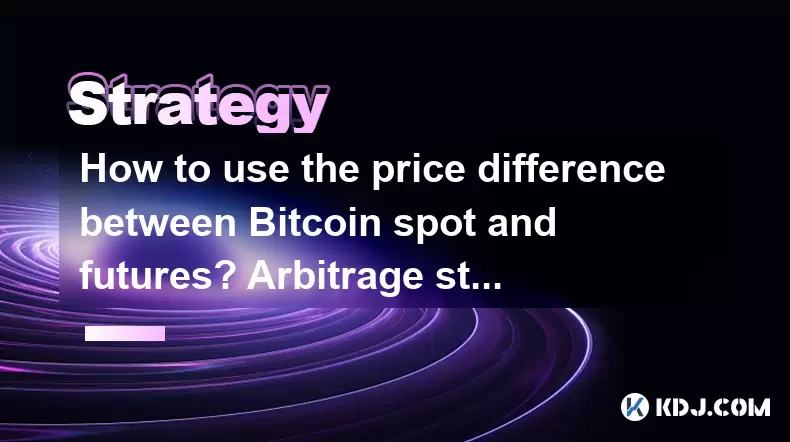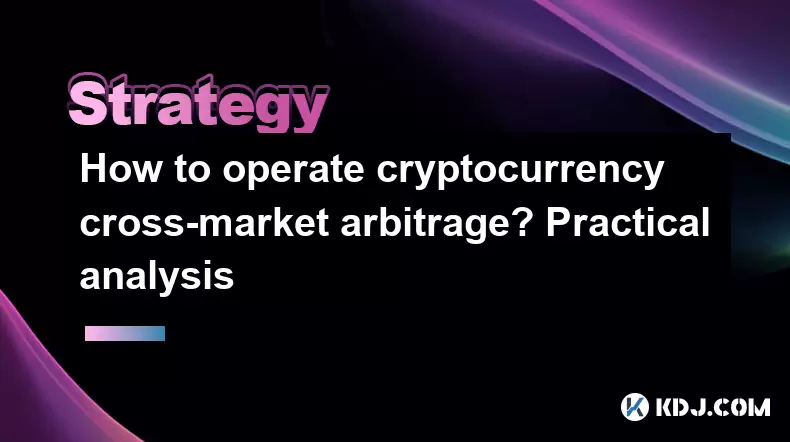-
 Bitcoin
Bitcoin $107,323.9971
-0.42% -
 Ethereum
Ethereum $2,442.7415
-1.58% -
 Tether USDt
Tether USDt $1.0005
0.00% -
 XRP
XRP $2.0902
-4.49% -
 BNB
BNB $645.3561
-0.33% -
 Solana
Solana $140.8832
-2.81% -
 USDC
USDC $0.9999
0.01% -
 TRON
TRON $0.2713
0.17% -
 Dogecoin
Dogecoin $0.1611
-2.35% -
 Cardano
Cardano $0.5556
-2.75% -
 Hyperliquid
Hyperliquid $36.8045
-1.10% -
 Bitcoin Cash
Bitcoin Cash $494.4393
-1.23% -
 Sui
Sui $2.6406
-2.97% -
 Chainlink
Chainlink $13.0846
-1.74% -
 UNUS SED LEO
UNUS SED LEO $9.0127
0.09% -
 Avalanche
Avalanche $17.4023
-1.37% -
 Stellar
Stellar $0.2339
-3.25% -
 Toncoin
Toncoin $2.8330
-0.57% -
 Shiba Inu
Shiba Inu $0.0...01124
-3.38% -
 Litecoin
Litecoin $84.9229
-0.60% -
 Hedera
Hedera $0.1432
-3.84% -
 Monero
Monero $311.0740
-1.35% -
 Bitget Token
Bitget Token $4.6591
3.94% -
 Dai
Dai $1.0001
0.01% -
 Ethena USDe
Ethena USDe $1.0000
-0.01% -
 Polkadot
Polkadot $3.3033
-1.64% -
 Uniswap
Uniswap $6.9221
-4.55% -
 Pi
Pi $0.5546
-4.86% -
 Aave
Aave $257.5046
-1.30% -
 Pepe
Pepe $0.0...09215
-3.26%
Practical skills for swing trading in currency speculation
Successful swing trading in currency speculation requires a comprehensive understanding of market analysis, a well-defined trading plan, and effective risk management strategies to maximize profitability.
Jan 07, 2025 at 08:01 pm

Key Points of Swing Trading in Currency Speculation
- Understand the fundamentals of currency trading and market analysis.
- Develop a well-defined trading plan and risk management strategy.
- Identify and exploit price patterns and trends.
- Manage emotions and avoid overtrading.
- Utilize technical indicators and leverage to enhance profitability.
Step 1: Understanding Currency Trading Fundamentals
- Currency Pair: Understand the relationship between the base currency (quoted second) and the counter currency (quoted first).
- Pip Value: Calculate the value of each price increment based on the trading size.
- Market Hours: Determine the active trading hours for different currency pairs.
- Economic Indicators: Study macroeconomic data releases that can impact currency values, such as GDP, employment, and interest rates.
Step 2: Developing a Trading Plan
- Trading Strategy: Establish clear rules for entering and exiting trades, including entry and exit points, risk-reward ratios, and profit targets.
- Risk Management: Define the maximum amount of capital at risk per trade and implement stop-loss orders to mitigate potential losses.
- Trade Journal: Keep a record of all trades, including entry and exit prices, profit/loss, and observations. This helps identify patterns and areas for improvement.
Step 3: Identifying and Exploiting Price Patterns
- Trendlines: Connect price highs or lows to identify the overall market trend.
- Support and Resistance Levels: Identify key price levels where the trend is likely to reverse or pause.
- Candle Stick Patterns: Study the arrangement of candlestick bodies and wicks to anticipate market behavior.
Step 4: Managing Emotions and Avoiding Overtrading
- Psychology: Recognize and manage the emotional impact of trading, including greed, fear, and FOMO (fear of missing out).
- Discipline: Stick to the trading plan and avoid impulsive decision-making.
- Breaks: Take regular breaks to clear the mind and refocus.
Step 5: Utilizing Technical Indicators
- Moving Averages: Smooth out price fluctuations to identify trend direction.
- Relative Strength Index (RSI): Measure the momentum and strength of a trend.
- Stochastics: Assess overbought or oversold conditions in the market.
Step 6: Leveraging to Enhance Profitability
- Margin Trading: Borrow capital to increase trading size, but also increases potential losses.
- Leverage Ratio: The ratio between borrowed and personal funds.
- Risk Management: Use leverage with caution and always consider the potential for magnified losses.
FAQs
Q1: What is the best currency pair for swing trading?
A1: The most popular currency pairs for swing trading include EUR/USD, GBP/USD, USD/JPY, and AUD/USD.
Q2: How long should I hold a swing trade?
A2: Swing trades typically last from a few days to a few weeks, but can vary depending on the market conditions and trading strategy.
Q3: How much capital do I need to start swing trading?
A3: The minimum capital required varies based on the trading strategy, leverage used, and risk tolerance. However, it is recommended to start with a small account to minimize losses while gaining experience.
Q4: What are the common mistakes to avoid in swing trading?
A4: Overtrading, ignoring risk management, chasing losses, trading emotionally, and neglecting market analysis are common mistakes to avoid.
Disclaimer:info@kdj.com
The information provided is not trading advice. kdj.com does not assume any responsibility for any investments made based on the information provided in this article. Cryptocurrencies are highly volatile and it is highly recommended that you invest with caution after thorough research!
If you believe that the content used on this website infringes your copyright, please contact us immediately (info@kdj.com) and we will delete it promptly.
- Nintendo's Rare Sale: A Treat for Switch Gamers!
- 2025-06-27 18:30:12
- Crypto, Stablecoins, and the European Commission: Navigating the Regulatory Landscape
- 2025-06-27 19:27:14
- Neo Pepe Coin's Presale Heats Up Amidst Market Shifts: The Next Big Meme Coin?
- 2025-06-27 19:10:12
- Crypto Fundraising H1 Peak: Successful Closings Signal a Bullish Turn
- 2025-06-27 20:10:12
- Cathie Wood, Coinbase, and ATH: What's Driving the Crypto Buzz?
- 2025-06-27 20:10:12
- Cambridge Investment, Coinbase, and Stock Holdings: What's the Deal?
- 2025-06-27 18:30:12
Related knowledge

What are the skills of Bitcoin option hedging? Practical case sharing
Jun 24,2025 at 04:01pm
Understanding Bitcoin Option HedgingBitcoin option hedging is a risk management strategy used by traders and investors to protect their positions in the volatile cryptocurrency market. By using options, individuals can limit potential losses while retaining the opportunity for profit. In essence, it allows one to insulate against adverse price movements...

How to use the price difference between Bitcoin spot and futures? Arbitrage strategy
Jun 20,2025 at 02:56pm
Understanding Bitcoin Spot and Futures MarketsTo effectively leverage arbitrage opportunities between Bitcoin spot and futures markets, it's essential to understand the fundamental differences between these two types of markets. The spot market refers to the direct buying and selling of Bitcoin for immediate delivery at the current market price. In cont...

How to increase DeFi lending income? Strategy and risk analysis
Jun 24,2025 at 02:08pm
Understanding DeFi Lending and Its Income PotentialDeFi (Decentralized Finance) lending has emerged as a popular way to earn passive income in the cryptocurrency space. Unlike traditional banking systems, DeFi lending platforms allow users to lend their crypto assets directly to borrowers without intermediaries. The lenders earn interest based on the su...

How to operate cryptocurrency cross-market arbitrage? Practical analysis
Jun 23,2025 at 04:01am
Understanding Cryptocurrency Cross-Market ArbitrageCryptocurrency cross-market arbitrage involves taking advantage of price differences for the same digital asset across different exchanges. The core idea is to buy low on one exchange and sell high on another, capturing the profit from the discrepancy. This strategy relies heavily on real-time market da...

How to make profits from high-frequency cryptocurrency trading? Sharing core skills
Jun 19,2025 at 05:07pm
Understanding High-Frequency Cryptocurrency TradingHigh-frequency trading (HFT) in the cryptocurrency market involves executing a large number of trades at extremely fast speeds, often within milliseconds. This method relies on small price discrepancies across exchanges or within a single exchange’s order book. Traders use complex algorithms and ultra-l...

What are the methods of cryptocurrency quantitative trading? Detailed analysis
Jun 22,2025 at 11:07pm
Understanding the Core of Cryptocurrency Quantitative TradingCryptocurrency quantitative trading refers to the use of mathematical models and algorithms to execute trades in the digital asset market. Unlike traditional discretionary trading, which relies heavily on human judgment, quantitative trading leverages data-driven strategies to identify profita...

What are the skills of Bitcoin option hedging? Practical case sharing
Jun 24,2025 at 04:01pm
Understanding Bitcoin Option HedgingBitcoin option hedging is a risk management strategy used by traders and investors to protect their positions in the volatile cryptocurrency market. By using options, individuals can limit potential losses while retaining the opportunity for profit. In essence, it allows one to insulate against adverse price movements...

How to use the price difference between Bitcoin spot and futures? Arbitrage strategy
Jun 20,2025 at 02:56pm
Understanding Bitcoin Spot and Futures MarketsTo effectively leverage arbitrage opportunities between Bitcoin spot and futures markets, it's essential to understand the fundamental differences between these two types of markets. The spot market refers to the direct buying and selling of Bitcoin for immediate delivery at the current market price. In cont...

How to increase DeFi lending income? Strategy and risk analysis
Jun 24,2025 at 02:08pm
Understanding DeFi Lending and Its Income PotentialDeFi (Decentralized Finance) lending has emerged as a popular way to earn passive income in the cryptocurrency space. Unlike traditional banking systems, DeFi lending platforms allow users to lend their crypto assets directly to borrowers without intermediaries. The lenders earn interest based on the su...

How to operate cryptocurrency cross-market arbitrage? Practical analysis
Jun 23,2025 at 04:01am
Understanding Cryptocurrency Cross-Market ArbitrageCryptocurrency cross-market arbitrage involves taking advantage of price differences for the same digital asset across different exchanges. The core idea is to buy low on one exchange and sell high on another, capturing the profit from the discrepancy. This strategy relies heavily on real-time market da...

How to make profits from high-frequency cryptocurrency trading? Sharing core skills
Jun 19,2025 at 05:07pm
Understanding High-Frequency Cryptocurrency TradingHigh-frequency trading (HFT) in the cryptocurrency market involves executing a large number of trades at extremely fast speeds, often within milliseconds. This method relies on small price discrepancies across exchanges or within a single exchange’s order book. Traders use complex algorithms and ultra-l...

What are the methods of cryptocurrency quantitative trading? Detailed analysis
Jun 22,2025 at 11:07pm
Understanding the Core of Cryptocurrency Quantitative TradingCryptocurrency quantitative trading refers to the use of mathematical models and algorithms to execute trades in the digital asset market. Unlike traditional discretionary trading, which relies heavily on human judgment, quantitative trading leverages data-driven strategies to identify profita...
See all articles

























































